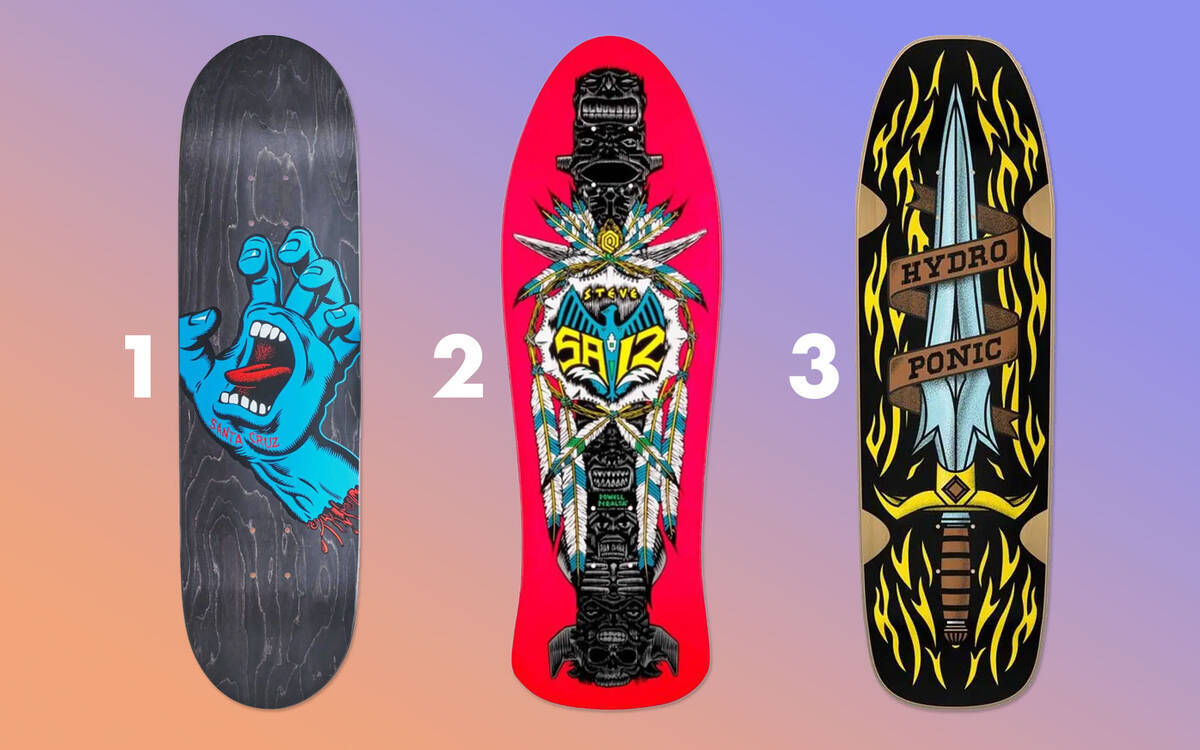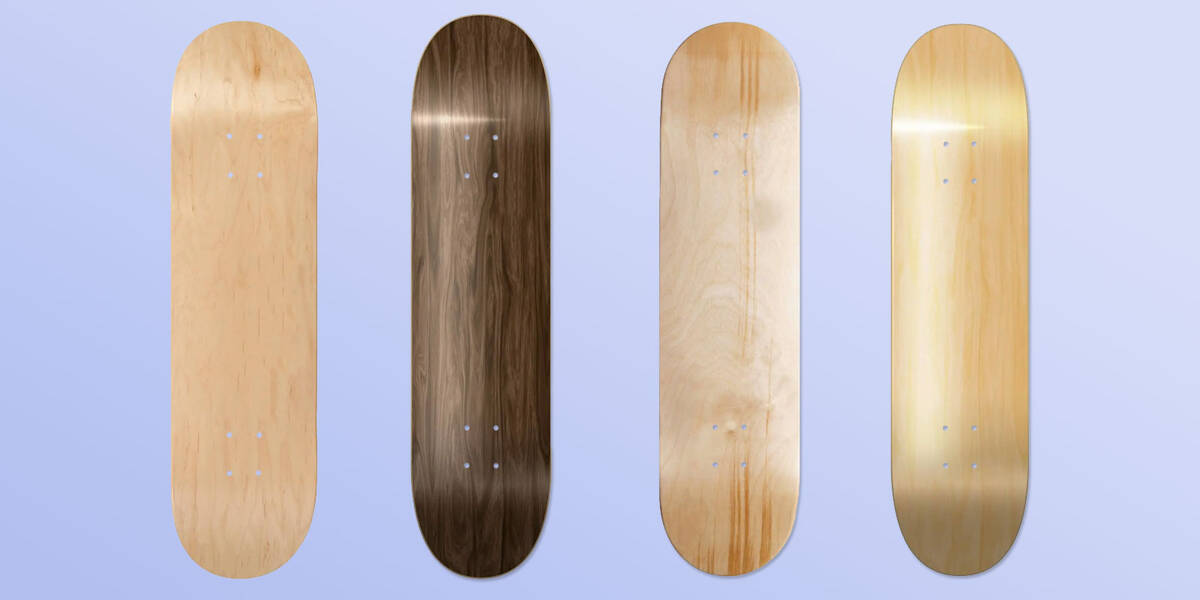Buying Guide for Skateboard Decks
Picking the proper skateboard deck goes beyond simply selecting the most eye-catching graphics. Have you wondered what size skateboard deck you should get or which shape would suit you best? And, what type of wood is ideal for a skateboard deck?
It doesn’t matter if you’re searching for beginner skateboard advice or if you’re an experienced skater in need of a new deck. This guide aims to address the common questions that may arise as you search for the perfect skateboard deck.
Overview
Understanding Skateboard Deck Sizes: Finding Your Fit
Your shoe size serves as a reliable indicator of the ideal skateboard deck size. Larger shoe sizes call for wider decks.
Your skateboarding style also plays a role in choosing the right deck width. Vert and bowl skating typically benefit from a wider deck, while a narrower deck is advantageous for street and flip tricks. Think about the following:
- Wider decks: These offer more stability and ease in landing tricks due to a bigger landing platform. The increased width, however, adds weight, requiring more power to lift the skateboard and execute flips.
- Narrower decks: These are more manoeuvrable and simpler to flip as they weigh less. But being smaller, they can be harder to catch during flips, making landing tricks theoretically more challenging.
Your personal preference will ultimately determine your choice, but we recommend consulting our skateboard size guide to help determine the optimal deck size based on your shoe size.
ALIGNING DECK AND TRUCK WIDTHS

When aligning skateboard decks and trucks, the usual recommendation is: Ensure the width of your skateboard deck matches the axle width of your trucks. Ideally, these should not differ by more than a quarter of an inch.
Your setup is ultimately yours to decide, and your preferences may vary, but this guideline is generally followed by most skaters.
CONSIDERING SKATEBOARD LENGTH
While skateboard deck length might not be a concern for every skater because it often correlates with width (wider decks tend to be longer and narrower ones shorter), the average deck length ranges from 29” to 32”.
The deck length contributes to the wheelbase and thus affects stability. Shorter decks are typically easier to control for those with shorter legs, while longer decks might be better suited for those with longer legs.
For those interested in significantly longer skateboards, take a look at these resources:
Exploring Skateboard Deck Shapes: Popsicles, Oval, and Hybrids

1. Popsicle shape 2. Old School Shape 3. Hybrid Shape
Currently, skateboard decks are often associated with the popsicle shape, though it’s part of a progression in design. New designs are continually evolving alongside skaters creatively pushing the limits of their boards.
POPSICLE DECKS
Popsicle decks feature both a kick-tail and kick-nose, permitting tricks at either end. Their near-symmetrical design has broadened the possibility for countless tricks such as fakies, nollies, nose slides, and switch riding. The popsicle shape became prominent during the rise of street skateboarding in the early ‘90s, known for innovating flip tricks, slides, and grinds.
OTHER DECK SHAPES
While the popsicle shape remains popular, hybrid decks combine elements of both popsicle and old school shapes.
Some skaters prefer egg-shaped decks, often over 9 inches in width, providing agility akin to popsicles but with a spacious, stable platform.
Old-school decks are widely available and can be used for both bowl skating and street cruising. Have a look at our cruiser skateboard decks to see some fantastic retro shapes:
Why is Deck Concave Beneficial?

The rise of technical street skateboarding brought about the common concave feature in modern decks. Concave refers to the skateboard's curve from side to side, aiding in flips by giving leverage and job security to keep feet positioned properly. It also contributes to deck stiffness. Skateboard deck concaves generally fall into three categories: low, medium, and high:
- Low concave: Provides a soft curve for a steady ride, offering a low centre of gravity.
- Medium concave: Balances flip trick capability and control. Safe bet for most skaters.
- High concave: This sharp curve alters board characteristics significantly, enhancing agility and ease of flips.
The concave of the deck you select will affect aspects like:
- Deck comfort and feel
- Trick leverage
- Deck stiffness, impacting the pop
Wood Types Used in Skateboard Decks

Maple is predominantly used for skateboard decks due to its strength, impact resistance, lightness, and flexibility.
Decks are composed of wood layers, bonded with glue or epoxy. Most decks feature 7-ply maple, indicating seven maple veneers. Maple's easy shaping and durability make it ideal for skateboard decks.
Different maple variants exhibit distinct traits. Canadian maple, for instance, is about 15% harder than Chinese maple. The dense structure of Canadian maple arises from slower growth in cooler climates compared to maple in warmer regions.
For a deck that endures heavy use while offering high pop and stiffness, choose the hardest wood type available. As a beginner, the subtle hardness differences may not be as crucial as the cost, allowing you to learn effectively on a lower quality deck.
Final Recommendations for Skateboard Decks and Additional Reading
When purchasing a new skateboard deck, it’s essential to have some griptape at hand. Explore our extensive collection here:
For more insights into various skateboard components, refer to this guide:
If you're unsure about how to apply grip to your deck or any steps of skateboard assembly, check out this guide:
Explore complete skateboard options here:
For assembling a skateboard using your preferred parts, consider our convenient solution:
